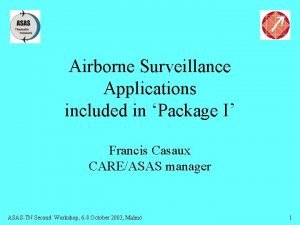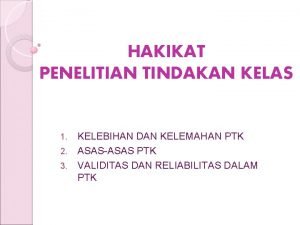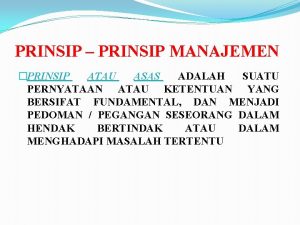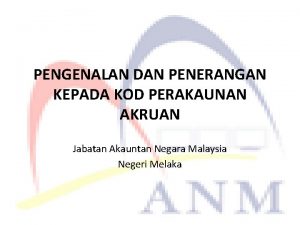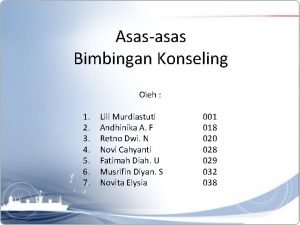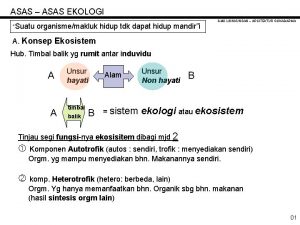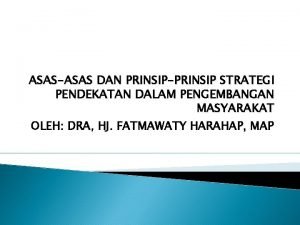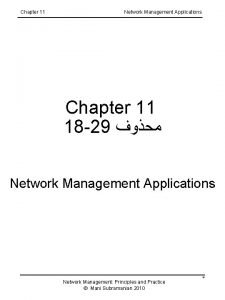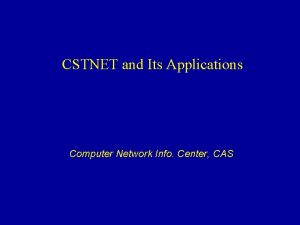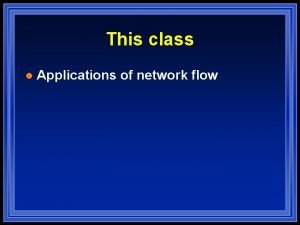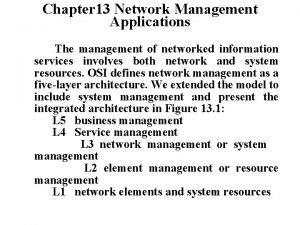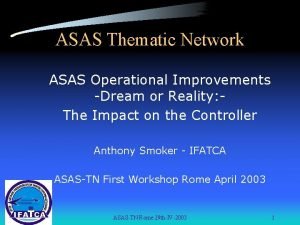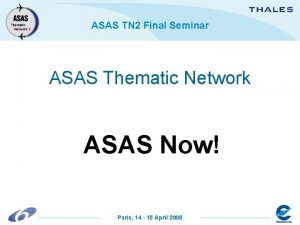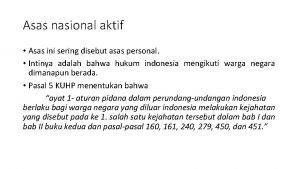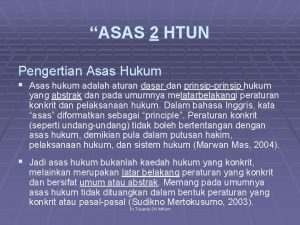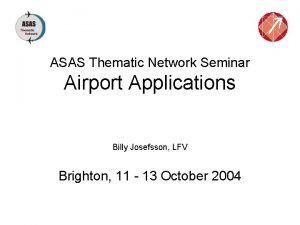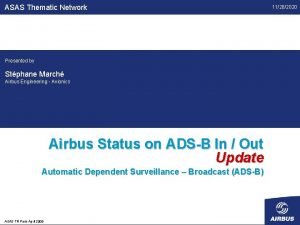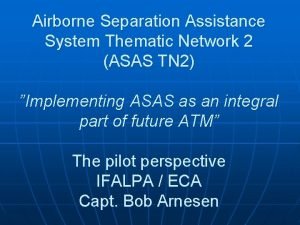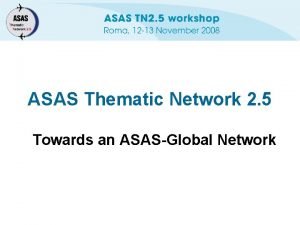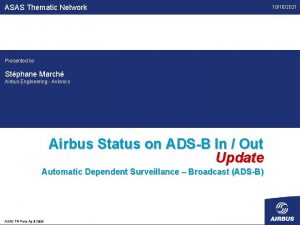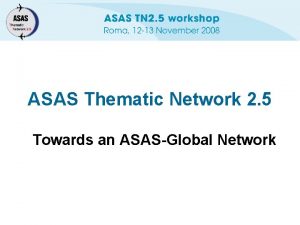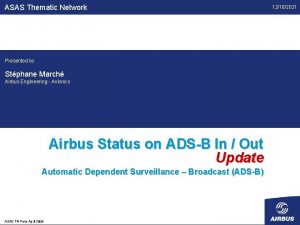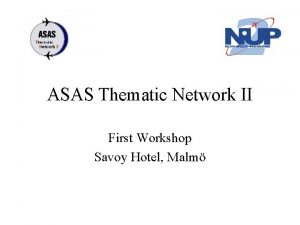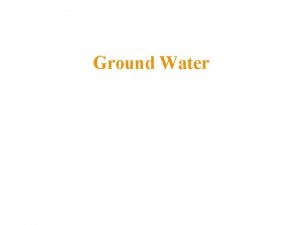Ground Surveillance Applications Peter Howlett ASAS Thematic Network



























- Slides: 27

Ground Surveillance Applications Peter Howlett ASAS Thematic Network Seminar Brighton, UK 11 - 13 October 2004

GS Applications First Package of GS/AS Applications GS Applications AS Applications 5 Ground Surveillance Applications 4 Airborne Situational Awareness Applications ADS-B-ACC, ADS-B-TMA, ADS-B-NRA, ADS-B-APT, ADS-B ADD ATSA- SURF ATSA-S&A ATSA-AIRB ATSA-SVA 3 Airborne Spacing Applications ASPA-S&M, ASPA-ITP, ASPA-C&P FOCUS

Content • GS Applications – What are we talking about? • Expected benefits • Status – Development status – Examples • Operational Approval • Technical Solutions • Costs and Incentives

GS Applications • Ground Surveillance – Downlinked ADS-B data is • acquired/processed by ground ATC systems • used by Air Traffic Controllers to provide or support surveillance services – No aircrew involvement (downlink is automatic) – No significant change to existing procedures • ADS-B can be used as – Primary source of surveillance data, e. g. ADS-B-NRA – Supplementary source of surveillance data, e. g. ADS-B-ACC ADS-B receiver ground station ATC System

Application Explanation GS application Short description ATC surveillance in terminal areas (ADS-B-TMA) ADS-B-RAD ATC surveillance for en This application will enhance ATC surveillance (in en-route airspace) currently -route airspace provided with radars. An example of many is the case of surveillance in areas where single radar coverage is provided. (ADS-B-ACC) This application will enhance ATC surveillance (in terminal areas) currently provided with radars. An example of many is the case of surveillance at low altitude and close to the terrain and also in areas where single radar coverage is provided. ATC surveillance in non-radar areas (ADS-B-NRA) This application will provide ATC surveillance in non-radar areas; e. g. remote areas, offshore operation areas, any continental areas and certain oceanic areas, which, due to the level of traffic or the cost of the equipment, could not justify the installation of radars. The purpose is to enhance traffic information and separation services Airport surface surveillance (ADS-B-APT) This application will provide a new source of surveillance information for a safer and more efficient ground movement management at airports with or without SMGCS. Airport ground vehicles can also be fitted with the necessary equipment and displayed on an airport map, together with aircraft. Aircraft derived data for This application will provide additional aircraft derived data through ADS-B to be ground tools used by the ATC ground system for developing or enhancing ATC tools like displays, MTCD, AMAN, DMAN and ground based safety nets. CDM applications will (ADS-B-ADD) also share the benefits. It should be noted that this application does not encompass the ground tools themselves; it only provides additional input data for these tools.

Expected Benefits • Expected Benefits – Safety: Safer operations – Better surveillance service & lower separation minima in areas where radar coverage is inexistent or incomplete – Improve accuracy of surveillance data – Improve ATC tools with supplementary ADS-B aircraft derived data – Potentially, become a lower-cost alternative to radar in some areas

Where will it start ? • Remote low density areas where full radar coverage is not economically or technically viable – Wide low density continental areas (e. g. Australian outback, Alaska, etc. ) – Islands – Offshore operations • Local pockets where radar coverage is incomplete – Terminal areas with terrain obstructions, mountainous regions. . . • Areas where radar is being decommissioned • Airport applications

Status of GS Applications GS application Research (European) Pre-operational trials Operational ATC surveillance for en -route airspace (ADS-B-ACC) SEAP MEDUP CARE ATC surveillance in terminal areas (ADS-B-TMA) SEAP NUP II MEDUP CARE NUP II Burnett Basin ATC surveillance in non-radar areas (ADS-B-NRA) NUP II SEAP DADI II Bethel Alaska Gulf of Mexico NUP II Kiruna (Australian UAP expected in 2006+) Airport surface surveillance (ADS-B-APT) NUP II CARE NUP II Arlanda Aircraft derived data for ground tools (ADS-B-ADD) NUP II CARE SEAP DADI II MEDUP INTENT

Some Examples

Australian Upper Airspace Project (UAP) 28 ground stations to be deployed by end 2005 at existing communications sites throughout outback Australia Radar coverage (dual in terminal areas) • Nationwide ADS-B coverage at and above FL 300 • Connected to TAAATS ATC System • ADS-B at every Working Position Will provide radar-like separation services to suitably equipped aircraft • Improved Safety • Reduced separation minima compared to current procedural or ADS-C separation Procedural ATC with VHF

Australian Upper Airspace Project (UAP) • 1090 Extended Squitter technology • 28 x 2 ADS-B Ground Stations • Takes advantage of ADS-B out capability certified on current Airbus and Boeing aircraft (linked to ELS/EHS mandate) • Available for other aircraft, including regionals and GA and as a retrofit option FL 300 10, 000 5, 000 FL 200 ft FL 300

UAP “Radar-Like” approach • Safety case: ADS-B performance as good as or better than radar • ADS-B tracks made similar to radar • ATC Safety Alerts (Route & Altitude monitoring, STCA) • Dual architecture + backup similar to radar • RAIM outages managed like scheduled radar maintenance

ADS-B on every console

Alaska Capstone Program Phase 1 • Phase 1 (Bethel) Phase 2 – Objective: Improve Safety in the area – Wide scope program: surveillance, terrain / moving map, weather information • TIS-B, FIS-B, ATSA-S&A, ADS-B-NRA, Weather, GPS approaches, etc. – ADS-B enables radar-like capability from Anchorage centre – 190 aircraft equipped – Ground network of 11 transceivers • Phase 2 has started in Southeast Alaska (Juneau area), includes extension to IFR operations

NUP-II - GS Applications 4 Clusters addressing GS applications Greenland - NRA Reykjavik Kiruna - NRA • NRA Scatsta – NRA Offshore Arlanda - APT • NRA Offshore • APT North Sea – NRA Offshore Copenhagen - APT Brussels - APT Eurocontrol - ADD • ADD Helsinki - APT Toulouse- APT Innsbruck(A) - NRA

NUP-II Example: Greenland ADS-B-NRA application (including terminal area) - Safety issues - Terrain / environment constraints - Small airport - No business case for SSR - Reasonable number of aircraft to be equipped

NUP II Example - Arlanda ADS-B-APT application • 22 buses + 17 vehicles + VDL-4 equipped aircraft • ADS-B tracks visible on ASMGCS in Tower • VDL-4 Ground Station also broadcasts TIS-B, FIS-B and INFO-B • Will be used for ATSA-SURF • Safety Case nearing completion

Other GSA initiatives • Safe Flight 21 test beds in Memphis, Louisville (ADS-B-APT) • Gulf of Mexico (ADS-B-NRA) • Projects in the Asia Pacific Region, incl. Mongolia, China • Russian plans to install network of ADS-B ground stations • European Research projects: NUP II+, C-ATM, EMMA, SEAP, EGOA, etc. • Several initiatives centred around use of ADS-B to monitor ground movements at the airport. • And others. . .

Operational Approval • GS applications: – same concept of operations, same procedures, but different technology – comparison approach • Easier, faster. . . when it’s acceptable – no real impact on airborne procedures & training (automatic broadcast) – Main issues • Validate technology • Safety assessment, including failure modes, backups, dependency on GPS, RAIM holes, etc. • System redundancy • Maturity/stability of standards

Operational Approval • ADS-B GS Applications – A stepping stone towards AS applications? – Learn to use ADS-B data, – Build confidence in ADS-B data & prepare actors for wider use of ADS-B – Deploy initial ground infrastructure network for ADS-B • can later be expanded to support airborne surveillance applications as well – Encourage fitment of ADS-B out

Technical Solutions 1/2 • Airborne Systems – ADS-B out capability • Ground Systems – ADS-B Ground Stations – Communication Network – Limited changes in ATC centre, e. g. • Acquisition and processing of ADS-B tracks as a supplementary source of surveillance data • Impact, if any, on ATC tools & Safety Nets • Minor changes to CWP HMI to display/identify ADS-B tracks • Exploitation of additional aircraft derived data available through ADS-B (ADS-B-ADD)

Technical Solutions 2/2 • 1090 ES “ADS-B out” capability on aircraft – 1090 ES implementation straightforward on ELS/EHS capable aircraft • 1090 ES ADS-B out compliant avionics available from vendors • Service Bulletin available on Airbus and Boeing aircraft – OK to “squit” – No basis for certification of operational surveillance applications – Current implementations deliver GPS-only position – Current Implementations are RTCA DO-260 compliant

Standards • Initial standards exist for 1090 MHz Mode S Extended Squitter, VDL Mode 4, UAT • ICAO ANC 11 near-term recommendations – 1090 ES for initial implementations and worldwide interoperability – VDL Mode 4 and UAT for regional implementations • Maturity and stability of standards is an issue, e. g. – NUCp -> NIC/NAC/SIL – Intent information • RFG activity essential to determine adequate performance and interface standards, based on intended applications

Costs and Incentives • 1090 ES ADS-B out capability on aircraft facilitated by European ELS/EHS mandate – Cost impact is marginal – Opportunity for better, wider and more consistent fitment of ADS-B out • could do better • Will probably need incentives, e. g. for General Aviation

Costs and Incentives • Business case for ADS-B Ground Surveillance is promising – Potential to improve Safety and provide better surveillance services at a fraction of the cost of radar – Main issue is airborne equipage • Difficulty of equipping an acceptable percentage of the fleet depends on – Aircraft mix operating in the area – How many aircraft account for most of the flights – How fast will aircraft become ADS-B out equipped as a result of European ELS/EHS mandate – Potential for local pockets of implementation (e. g. coastal areas, islands) as well as for large areas (e. g. continent-wide Australian deployment) – Is there a case for replacement of radars by ADS-B?

Conclusion • Initial Ground Surveillance applications of ADS-B are happening – Immediate safety and operational benefits expected with GS applications – A step towards AS applications

THANK YOU
 Chloe howlett
Chloe howlett Chloe howlett
Chloe howlett Airborne surveillance applications
Airborne surveillance applications What is a theme statement
What is a theme statement Asas asas ptk
Asas asas ptk Asas keamanan dan kepuasan kerja bagi pegawai
Asas keamanan dan kepuasan kerja bagi pegawai Asas pengelolaan keuangan negara
Asas pengelolaan keuangan negara Asas-asas dalam pendidikan multikultural
Asas-asas dalam pendidikan multikultural Pemusatan wewenang
Pemusatan wewenang Kod akruan
Kod akruan Penyata kedudukan kewangan
Penyata kedudukan kewangan Asas asas perencanaan
Asas asas perencanaan Pentingnya pemeliharaan karyawan
Pentingnya pemeliharaan karyawan Pengertian asas asas bimbingan konseling
Pengertian asas asas bimbingan konseling Bidang bidang dalam perusahaan
Bidang bidang dalam perusahaan Asas ekologi
Asas ekologi Asas kepramukaan
Asas kepramukaan Asas asas pengembangan masyarakat
Asas asas pengembangan masyarakat Asas-asas pokok etika komputer
Asas-asas pokok etika komputer Asas asas demokrasi pancasila
Asas asas demokrasi pancasila Asas asas hubungan dalam islam
Asas asas hubungan dalam islam Civil engineering applications of ground penetrating radar
Civil engineering applications of ground penetrating radar Principles of network applications
Principles of network applications Principles of network applications
Principles of network applications Network management applications
Network management applications Cstnet
Cstnet Network flow applications
Network flow applications Network management applications
Network management applications


